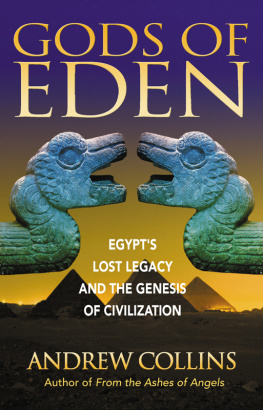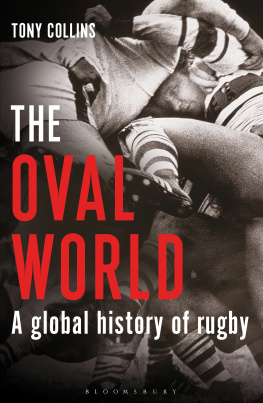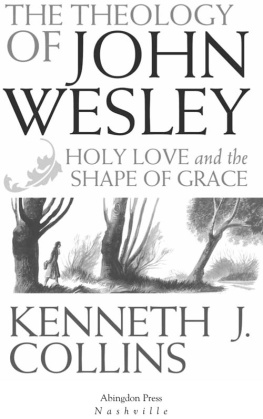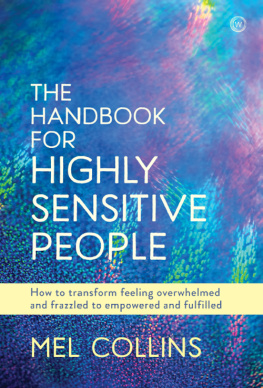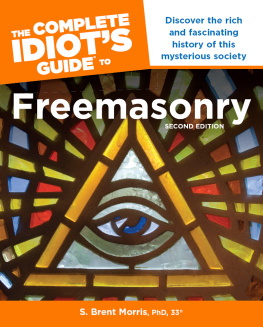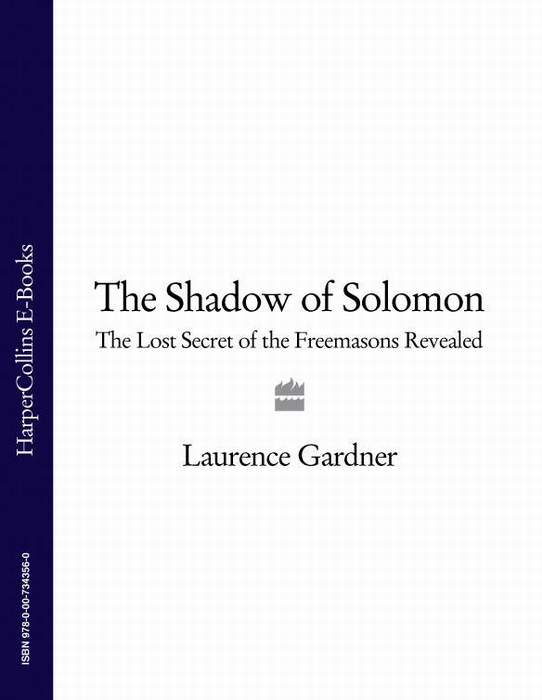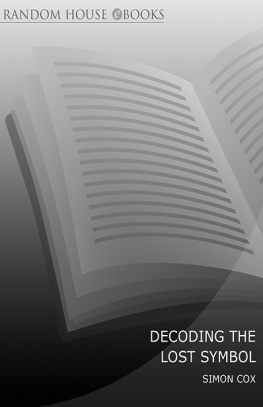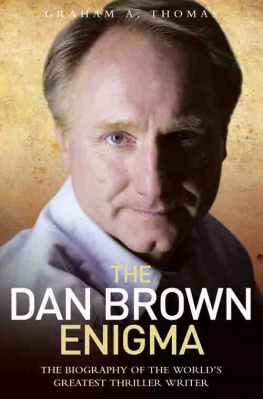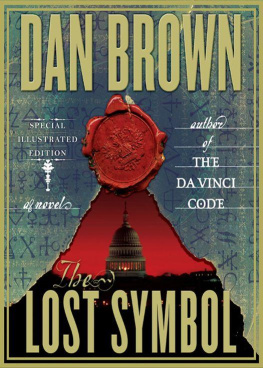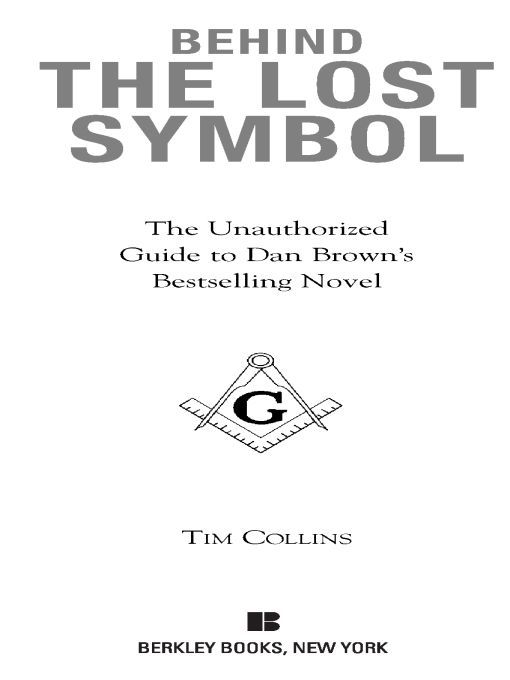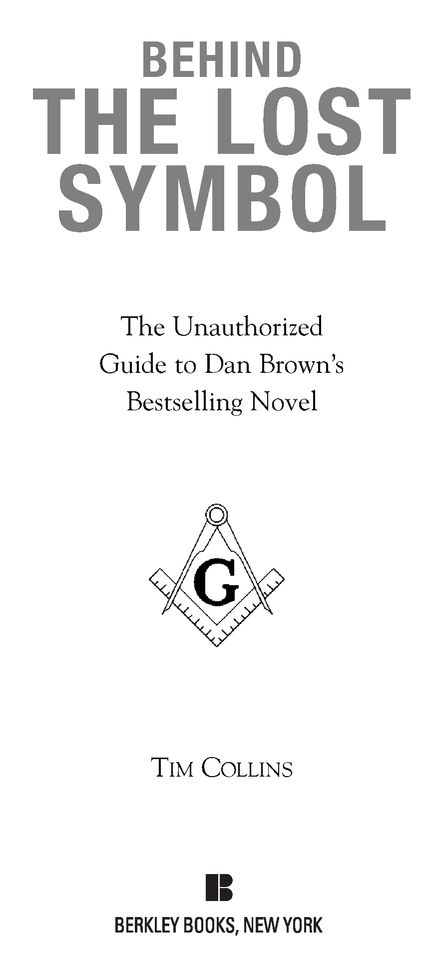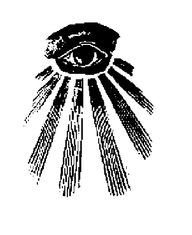Table of Contents
Most Berkley Books are available at special quantity discounts for bulk purchases for sales promotions, premiums, fund-raising, or educational use. Special books, or book excerpts, can also be created to fit specific needs.
For details, write: Special Markets, The Berkley Publishing Group, 375 Hudson Street, New York, New York 10014.
ACKNOWLEDGMENTS
Thanks to Collette for putting up with all my speculation about the plot of The Lost Symbol. Thanks also to Toby Buchan, Louise Dixon, Judith Palmer, Dominique Enright, Lesley Levene, Abi Morgan and everyone at Michael OMara Books for their help with this project. Finally, my thanks to David Woodroffe for the specially commissioned illustrations, Glen Saville for the U.K. cover design, and Ron Callow of Design 23 for the original design and layout of the text and plates. Thanks also to the team at Berkley for their work on the U.S. edition.
FACT
In 2009, an editor at Doubleday received a highly confidential Word document. The document was so eagerly anticipated that online forums had been speculating about its contents for six years.
All the rituals, science and organizations discussed in the document were accurate. Sort of.
This document was The Lost Symbol, the sequel to The Da Vinci Code.
INTRODUCTION
Like many people, I finally got hold of Dan Browns third Robert Langdon novel on the morning of Tuesday, September 15, 2009. My local bookshop had opened early for the event, and quite a few people were in line to get the book, although mercifully none of them was dressed as a character from the series (I considered sporting the Robert Langdon mullet from the movie of The Da Vinci Code, but thought better of it).
The Lost Symbol, like its two predecessors in the Langdon series, is a fast-paced thriller that weaves fact and alternative history to expose shocking revelations about the world we think we know. Its probably fair to say that if this was a debut novel, it would have been warmly received by genre fans, and perhaps gained some mainstream media attention. But coming as the sequel to one of the bestselling novels in history, and with a record-breaking initial print run of 6.5 million copies, The Lost Symbol has attracted blanket media coverage, sparking critical debate and a grisly discounted cover-price war.
The Da Vinci Code was unquestionably the publishing phenomenon of the past few years, and has now sold more than 81 million copies worldwide. A huge backlash inevitably followed, and Brown became a popular target for authors and literary critics. Salman Rushdie even went as far as to describe The Da Vinci Code as a novel so bad it gives bad novels a bad name. And while it would be hard to deny that Browns prose style is simple...
With lots of short sentences. In italics.
... his novels undoubtedly work as the ruthlessly addictive blockbusters theyre intended to be. But theres more to Browns success than the simple guilty pleasure, of course. He has a gift for weaving complex ideas into his accessible prose. As Michael Baigent and Richard Leigh were so keen to remind everyone around the time of their unsuccessful plagiarism law-suit, there was nothing especially new about the idea of the Jesus bloodline, and the theories have been doing the rounds with conspiracy buffs for years. But in Browns hands the ideas touched a nerve worldwide and inspired fierce condemnation from Catholic groups that created endless free publicity.
The success of The Da Vinci Code inspired leagues of copycat authors, and the conspiracy theory thriller became a crowded subgenre. Titles such as The Alexander Cipher, The Mozart Conspiracy, The Moses Stone, The Machiavelli Covenant, The Mosaic Crimes, The Templar Legacy and The Exodus Quest began to appear as the bandwagon rolled on. Brown had established a formula that was easy to replicate, where a conspiracy involving a famous artist, historical figure or artifact would be unveiled in short chapters. Typically, a bizarre murder would trigger a breathless chase narrative in which a knowledgeable (but surprisingly fit) protagonist discovers a secret revealing how everything we think we know is wrong.
In the run-up to the release of The Lost Symbol, the online magazine Slate even published a Dan Brown generator, which lets you select a city and an organization and then generates the synopsis of a novel with a title like The Forgotten Crypt, The Hidden Enigma or The Last Mausoleum.
Perhaps to distance himself from his army of imitators, Brown has Langdon explicitly deny that hes an expert in conspiracy theories in Chapter 30 of The Lost Symbol. Some of the anti-Masonic theories that fans might have expected Brown to exploit, such as the inverted pentagram in the street plan above the White House, are dismissed by Langdon. Others, like the appearance of the word Mason on the Great Seal of the United States, are used as deliberate red herrings.
While Langdon might not be keen on the phrase conspiracy theory, theres no denying that the novel is packed with alternative history, pseudoscience and esoterica. Brown has always been interested in creating a hybrid of lecture and thriller, but the lessons come thicker and faster than before in The Lost Symbol (hardly surprising when you consider that he researched it for six years). No sooner has Langdon touched down in Washington, D.C., than were learning about Masonic Founding Fathers, Utopianism, Noetic Science, quantum mysticism and the lost wisdom of the ancients. There are even references to things were supposed to have retained from the previous novels, such as the Rosicrucians, the Knights Templar and the Illuminati. The effect is at times akin to dashing through a series of alternative history lectures without ever having the time to stop and listen to them.
In short, theres never been a Dan Brown novel more in need of an explanatory guide than The Lost Symbol. In this one, youll find entries giving the background to Browns book laid out in an A-Z format. Many of the facts that Dan Brown cites in his novel are solid, but there are places where hes embellished and exaggerated things to serve his storytelling, and Ill try to highlight these.
This guide serves as a primer to the complex mesh of facts and theories that make up the fictional world that I should probably resist calling the Browniverse. Browns skill might be to bring order from the chaos of history, religion, science and mathematics he throws at the reader, but I hope youll agree that the chaos deserves a closer look.
Ancient Mysteries
Before the publication of The Lost Symbol, many Freemasons were worried that Dan Brown would portray their organization as a sinister cabal bent on world domination. In fact, Robert Langdon dismisses these kinds of theories early on in the novel. But there is one alternative history of Freemasonry that seems to have caught Browns imagination, which is the idea that the fraternity are guardians of powerful arcane knowledge known as the Ancient Mysteries.


